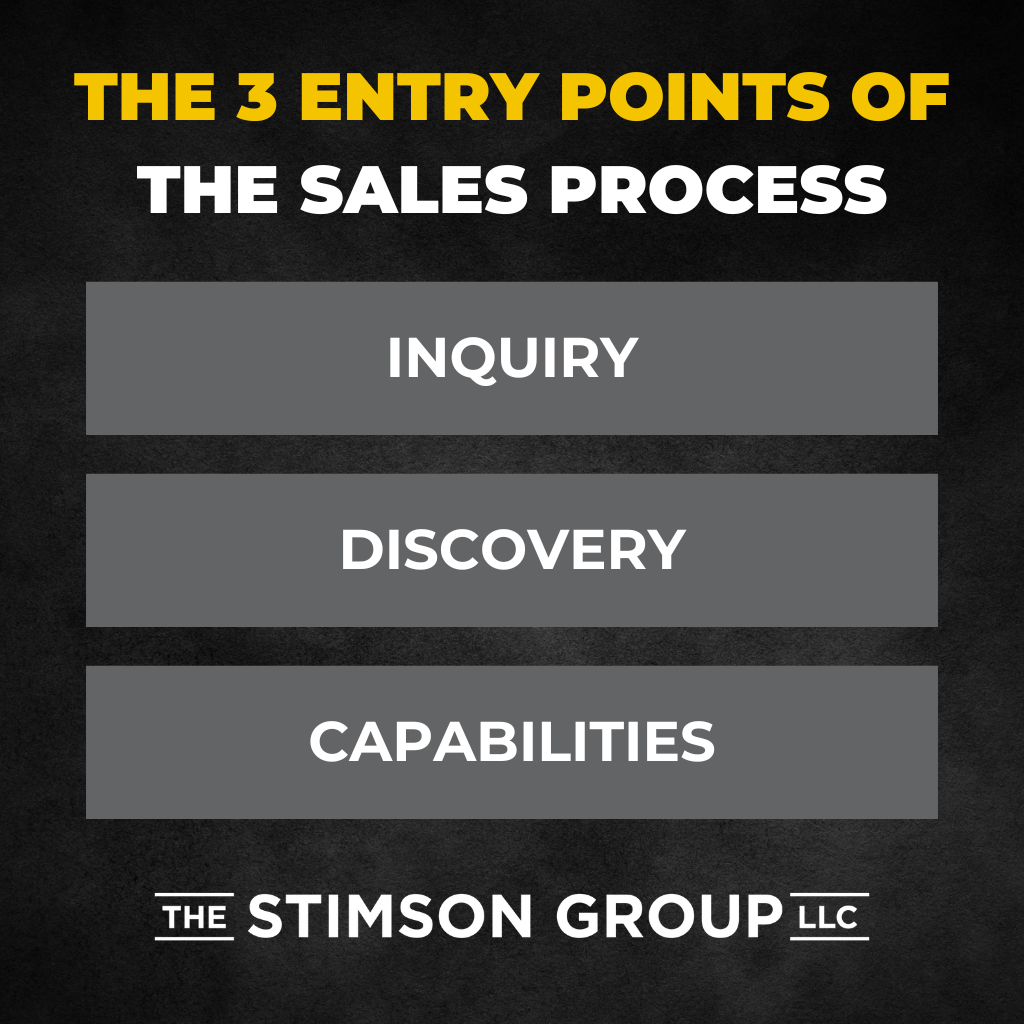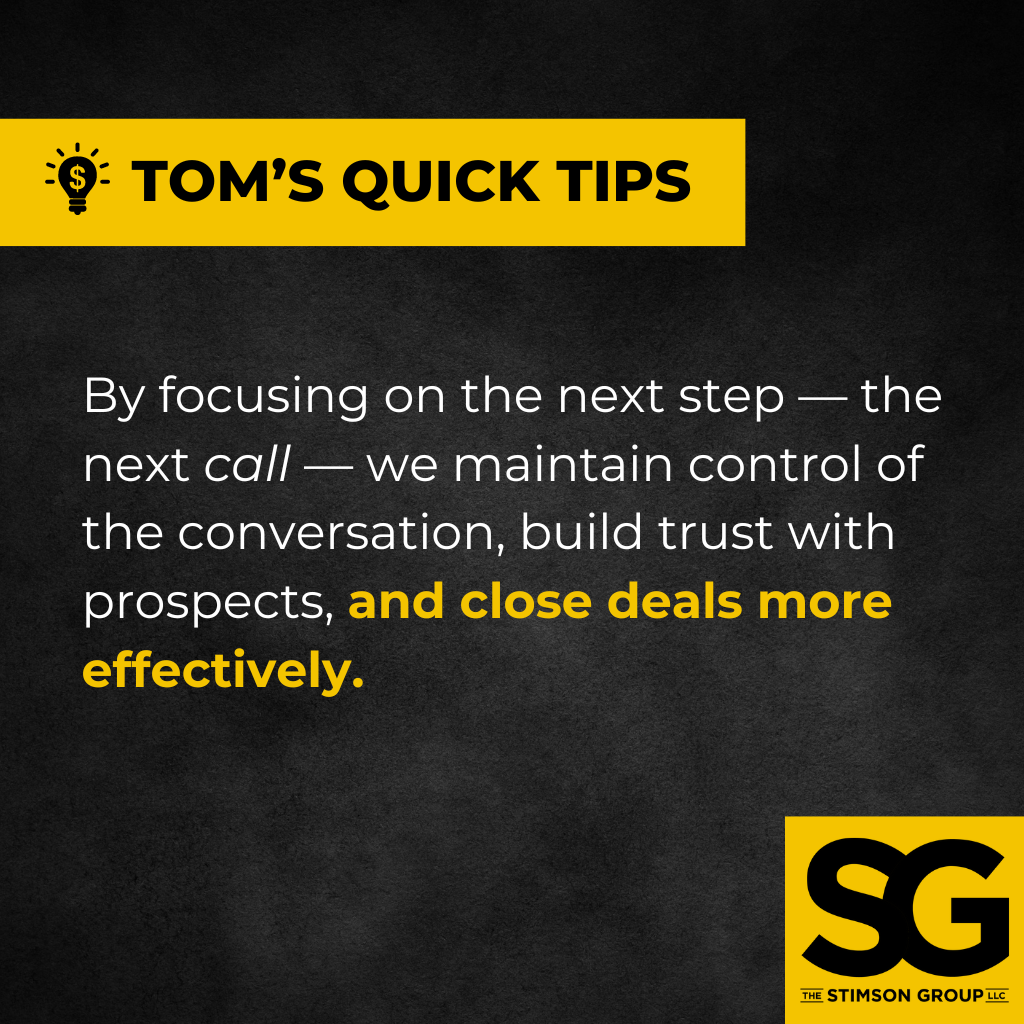
Listen instead on your Monday Morning Drive:
I love the movie “Glengarry Glen Ross.” It’s a classic in the sales world. But it introduces a concept that salespeople in our industry often fall victim to: “always be closing.”
This conventional understanding of sales, especially transactional sales, doesn’t work for our industry. Trying to achieve that “yes” during every interaction is misguided, especially because some yeses are meaningless.
So, what are we really trying to achieve during sales conversations?
Chasing the Meaningless “Yes”
Here’s the classic conversation: A salesperson is asked if we’ll do a job. They respond, “I haven’t closed the deal yet, but I think we’ll get there.”
But if we look at the history of the yeses in that deal, we’ll see that the deal is likely already closed. Everything points to the fact that we’re doing this work. Maybe we need one more “yes” for a question we haven’t asked yet.
Rather than focusing on getting a signed deal, a name on a piece of paper, and considering the deal locked in stone (which never happens — the deal always changes), we need to shift our mindset.
The Fluidity of Modern Projects
Nowadays, projects are fluid. We learned this during the pandemic, when we recorded presenters in advance because they couldn’t present live.
We now know that when a prospect signs a contract, you don’t actually close a deal. You just mark a moment in time when everybody agrees on something. That agreed-upon outcome will change before you know it.
We may complete three-quarters of the show before the event, and three-quarters of the work may be finished before a contract gets signed.
How are we able to pull this off? We stopped worrying about closing and started asking, “What needs to happen next?”
Focus on the Next Step
In selling, I always talk about getting the customer to the next step. Can we get them to book a call? Great — let’s ask them when the next call will be. Can we get them to engage at this moment? Great — what will the next engagement look like?
If a conversation ends with one party telling the other, “I’ll get back to you,” you’ve lost. You’ve let go of the steering wheel, and the car is driving itself. You’ve lost control of the conversation because you didn’t get to the next call.

The 3 Entry Points of the Sales Process
Before I share exactly how to get to the next call, let’s review the three typical entry points in the sales process:
- Inquiry: The goal here is to answer initial questions, learn more about the prospect’s needs, and then set up the next call, which could be a discovery call, capabilities pitch, ideation call, or solution share.
- Discovery: This is a mutual conversation about ideation and needs. The goal is to unpack the proposed project’s needs, so listen, ideate, recommend, and then listen more. The next call could be about budget framing, introducing the team, or a capabilities pitch.
- Capabilities: This is where you explain all the solutions you could implement for the client, many of which they may not know you offer. They may have called to discuss projections, but they don’t know you also do audio and lighting design.This leads to explaining elements and where to implement them to help the client, which could lead to a discovery call.
Setting Up the Next Move
Unfortunately, in sales, we often leave it to the prospect to make the next move. As sales professionals, we need to take control of the sales process and make the next step clear, relevant, and valuable.
Make that happen by following my simple, four-step process at all three entry points and beyond:
- Ask so you can listen. Make a list of open-ended questions. “Tell me more about…” “How are you doing…?” Avoid yes-or-no questions — they lead to dead ends.
- Mirror what you heard. Don’t ask the next question right away. Mirror what the prospect said first. Practice noting the clear, agreed-upon truths without adding any interpretation. “Can you use an LED wall for this event?” “Yes, we can use an LED wall for this event.”
- Offer observations or suggestions. Once you understand the prospect clearly, ask if you can share some ideas. Get permission to speak. “May I suggest an addition?” “Would you like to hear what we do for our best customers?”
- Recommend the next step. This is your final recommendation. Schedule the next call, meeting, or touchpoint with a clear deliverable. Include what (or who) should be on the next call. Make it mutually beneficial. Also, discuss how each party can reschedule if need be.
Closing the Deal Through Increments
How does scheduling an indefinite series of “next calls” help close the deal? It allows you to break the “big” commitment to an event that’s not quite defined into smaller, incremental chunks.
Because you’re always focused on the next call, you incrementally build your relationship with the prospect while moving the project forward. The next call is never the last call.
This differs from the “always be closing” mentality Glengarry Glen Ross presents, where there is no next call. It’s all about getting the check and finishing with the sale. “Always be closing” warns buyers that they’ll lose control by saying yes.
By focusing on the next step — the next call — we maintain control of the conversation, build trust with prospects, and close deals more effectively. It’s not about the hard sell. It’s about building a relationship with the prospect and taking strategic steps forward.
So, stop trying to close the deal. Start focusing on getting to the next call.






Leave a Reply